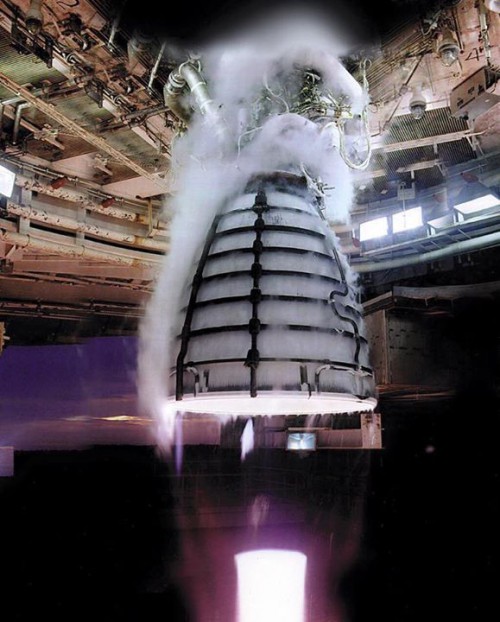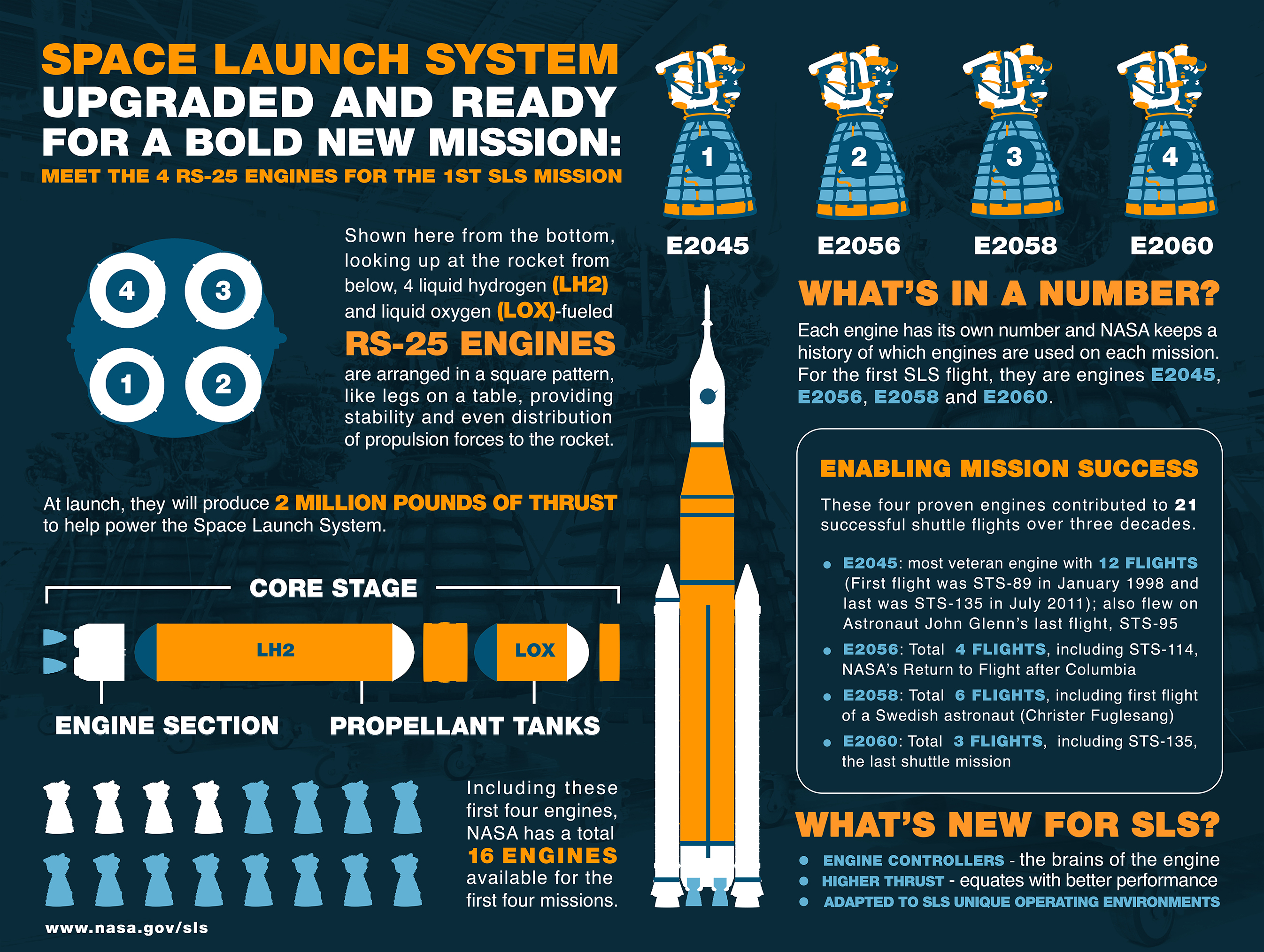16.10.2019
After a “corrective action,” Boeing back at work on SLS rocket core stage
"There are many steps in engine installation that have to occur."

NASA hopes to install the first of four space shuttle main engines on the SLS rocket this month.
Nearly a month ago, NASA announced that Boeing had assembled the core stage structure that forms the backbone of its Space Launch System rocket. This meant that all technicians needed to do to complete the full core stage was bolt on four space shuttle main engines and connect their plumbing.
Completing the core stage at NASA's rocket factory, the Michoud Assembly Facility in Southern Louisiana, would represent a significant milestone for the program. However, after assembling the core stage structure in September, two sources familiar with Boeing's work at the factory said the company had to "stand down" operations due to some issues.
“Corrective action”
Now, NASA officials have provided a little information about the causes of the delay. In a statement, the space agency's headquarters told Ars that "NASA initiated a forward looking corrective action request focused on improving the production system in preparation for Core Stage 2 and beyond." As a result of this corrective action, which was not specified, "Boeing chose to stand down in some areas and ensure the whole production team was aware of the intent behind the corrective action request."
A spokesperson from Marshall Space Flight Center, which is managing construction of the SLS rocket for NASA, said the stand down was needed to "perform an intensive site process review."
It is not clear what triggered the need for a corrective action, but one source suggested to Ars that Boeing technicians are having difficulty attaching the large rocket engines in a horizontal configuration rather than a vertical position. NASA and Boeing made a late change to the final assembly process, deciding to mate pieces of the core stage horizontally rather than vertically to save time. However, this source said horizontal mating of the engines has created problems.
Despite this, NASA officials said progress is being made. "NASA and Boeing are expected to have the first engine soft mated to the core stage next week," Tracy McMahan, a spokesperson for Marshall Space Flight Center, said on Saturday. "However, there are many steps in engine installation that have to occur before the installation is complete."
Nine years in
NASA is hoping to complete core stage assembly as soon as possible, which would allow the rocket to be moved by barge from Louisiana to a large test stand at nearby Stennis Space Center in southern Mississippi. There, at some point in 2020, the space agency plans to conduct a full-duration test firing known as a "Green Run" test to ensure the rocket is safe to launch.
This core stage is expected to fly the Artemis 1 mission for NASA some time in 2021, although the agency has not set a formal date yet for this flight after several delays.
Last week, in fact, marked the ninth anniversary of the SLS rocket program, which was created by a Congressional authorization bill in 2010. The rocket was originally supposed to be ready to launch by 2016. Before the rocket's first flight, NASA will have spent about $20 billion developing the SLS core stage, other elements of the rocket, and ground-support equipment.
One of the architects of the authorizing legislation, Alabama Senator Richard Shelby (R), has demanded that NASA use the SLS rocket to launch humans to the Moon, despite the availabilityof the Falcon Heavy, which costs significantly less and has already flown three times.
Quelle: arsTechnica
----
Update: 17.10.2019
.
NASA Commits to Future Artemis Missions With More SLS Rocket Stages

NASA has taken the next steps toward building Space Launch System (SLS) rocket core stages to support as many as 10 Artemis missions, including the mission that will carry the first woman and next man to the Moon by 2024.
The agency intends to work with Boeing, the current lead contractor for the core stages of the rockets that will fly on the first two Artemis missions, for the production of SLS rockets through the next decade. The core stage is the center part of the rocket that contains the two giant liquid fuel tanks. Towering 212 feet with a diameter of 27.6 feet, it will store cryogenic liquid hydrogen and liquid oxygen and all the systems that will feed the stage’s four RS-25 engines. It also houses the flight computers and much of the avionics needed to control the rocket’s flight.
NASA has provided initial funding and authorization to Boeing to begin work toward the production of the third core stage and to order targeted long-lead materials and cost-efficient bulk purchases to support future builds of core stages. This action allows Boeing to manufacture the third core stage in time for the 2024 mission, Artemis III, while NASA and Boeing work on negotiations to finalize the details of the full contract within the next year. The full contract is expected to support up to 10 core stages and up to eight Exploration Upper Stages (EUS).
“It is urgent that we meet the President’s goal to land astronauts on the Moon by 2024, and SLS is the only rocket that can help us meet that challenge,” said NASA Administrator Jim Bridenstine. “These initial steps allow NASA to start building the core stage that will launch the next astronauts to set foot on the lunar surface and build the powerful exploration upper stage that will expand the possibilities for Artemis missions by sending hardware and cargo along with humans or even heavier cargo needed to explore the Moon or Mars.”
Boeing’s current contract includes the SLS core stages for the Artemis I and Artemis II missions and the first EUS, as well as structural test articles and the core stage pathfinder. The new contract is expected to realize substantial savings compared to the production costs of core stages built during the design, development, test and evaluation phase by applying lessons learned during first-time builds and gaining efficiencies through bulk purchases.
“NASA is committed to establishing a sustainable presence at the Moon, and this action enables NASA to continue Space Launch System core stage production in support of that effort to help bring back new knowledge and prepare for sending astronauts to Mars,” said John Honeycutt, SLS Program Manager at Marshall. “SLS is the only rocket powerful enough to send Orion, astronauts and supplies to the Moon on a single mission, and no other rocket in production today can send as much cargo to deep space as the Space Launch System rocket.
For the first three Artemis missions, the SLS rocket uses an interim cryogenic propulsion stage to send the Orion spacecraft to the Moon. The SLS rocket is designed to meet a variety of mission needs by evolving to carry greater mass and volume with a more powerful EUS. The EUS is an important part of Artemis infrastructure needed to send astronauts and large cargo together, or larger cargo-only shipments, to the Moon, Mars and deep space. NASA aims to use the first EUS on the Artemis IV mission, and additional core stages and upper stages will support either crewed Artemis missions, science missions or cargo missions.
“The exploration upper stage will truly open up the universe by providing even more lift capability to deep space,” said Julie Bassler, the SLS Stages manager at Marshall. “The exploration upper stage will provide the power to send more than 45 metric tons, or 99 thousand pounds, to lunar orbit.”
The Space Launch System rocket, Orion spacecraft, Gateway and Human Landing System are part of NASA’s backbone for deep space exploration. Work is well underway on both the Artemis I and II rockets, with core stage assembly nearly complete at Michoud. Soon, the stage will be shipped to NASA’s Stennis Space Center near Bay St. Louis, Mississippi, where it will undergo Green Run testing, an integrated test of the entire new stage that culminates with the firing of all four RS-25 engines. Upon completion of the test, NASA’s Pegasus barge will take the core stage to NASA’s Kennedy Space Center in Florida where it will be integrated with other parts of the rocket and Orion for Artemis I. Boeing also has completed manufacturing most of the main core stage structures for Artemis II.
The Artemis program is the next step in human space exploration. It’s part of NASA’s broader Moon to Marsexploration approach, in which we will quickly and sustainably explore the Moon and use what we learn there to enable humanity’s next giant leap, sending astronauts to Mars.
Quelle: NASA
+++
Update: 23.10.2019
.
First Engine Installed on SLS as NASA Orders More Rockets, Conducts Pathfinder Ops in Florida

NASA is full steam ahead with the Space Launch System, as years of development and manufacturing continue transitioning into flight hardware final assembly and integration for the upcoming Artemis moon missions after the turn of the decade.
The agency just ordered a third rocket core and is finalizing details with Boeing for a contract of up to 10, while workers at the launch site in Florida practice processing ops with a recently arrived pathfinder, and technicians at Michoud Assembly Facility in New Orleans install the four flight engines on the bottom of the enormous 212-foot tall core stage for the first SLS flight – Artemis 1.
Over the last 4 years, all 16 of the engines have been modified from their reusable shuttle-era configurations, tested, and cleared for flight on the first four SLS Artemis missions.
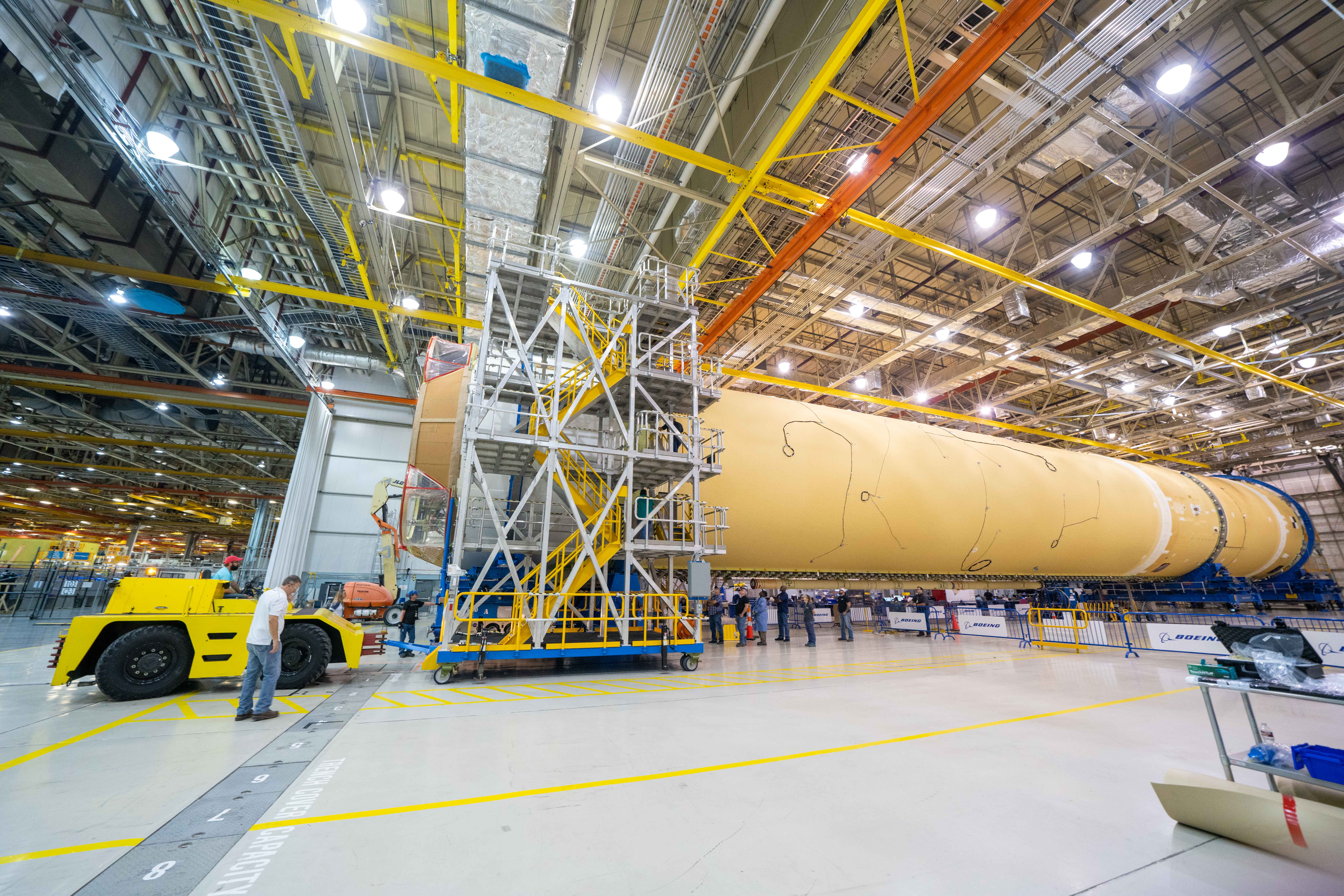
The rocket will then move to Stennis Space Center next year for a series of tests that will build like a crescendo over several months and climax with a full-duration test fire, a ‘Green Test Run’ where the integrated rocket and engines will come to life together for the first time, just like on launch.
The test series will validate the vehicle as ready for flight, demonstrating that the engines, tanks, fuel lines, valves, pressurization system, and software all perform together as planned on launch day. Pathfinder practice ops were conducted on the test stand this past August to ensure workers are ready when the actual flight hardware arrives.
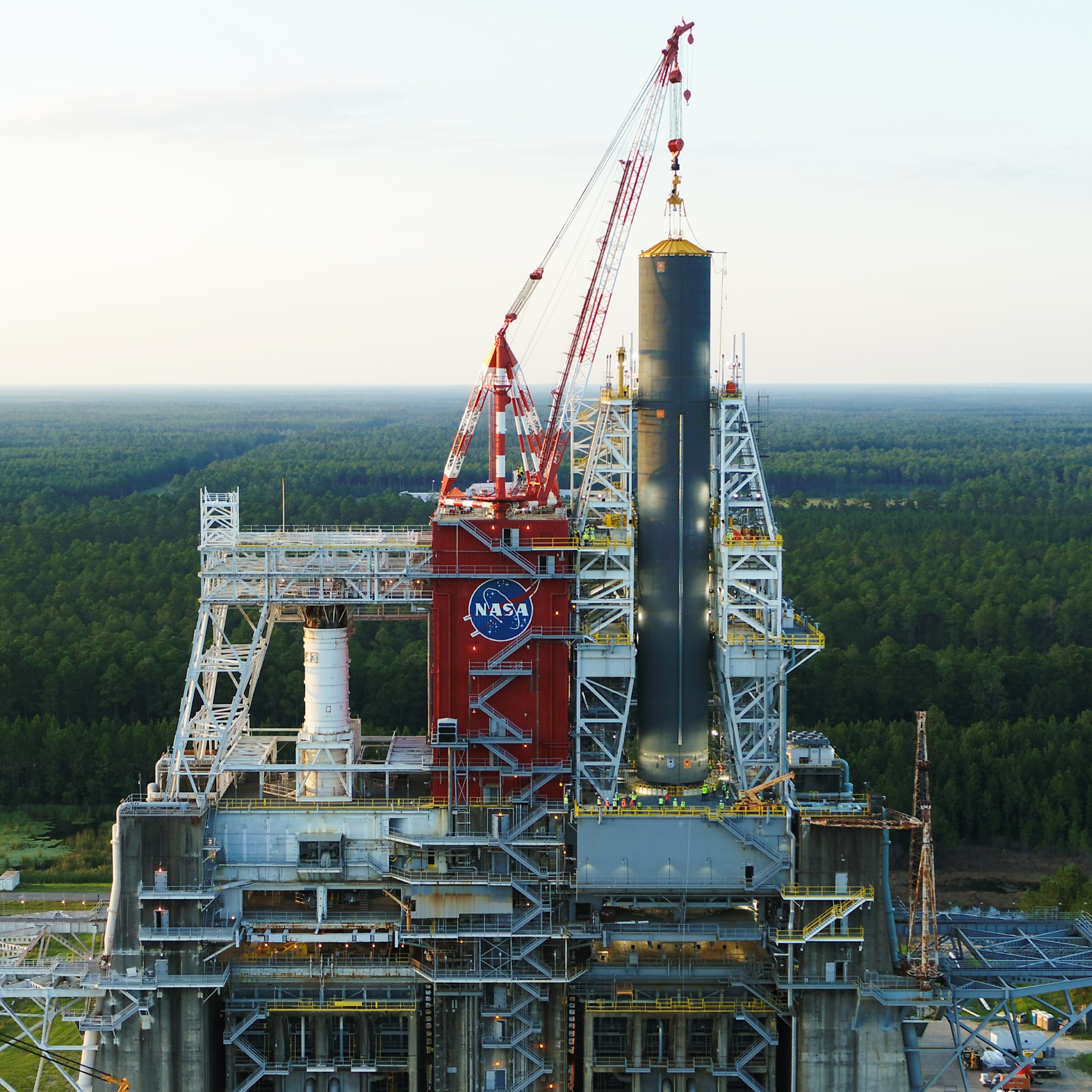
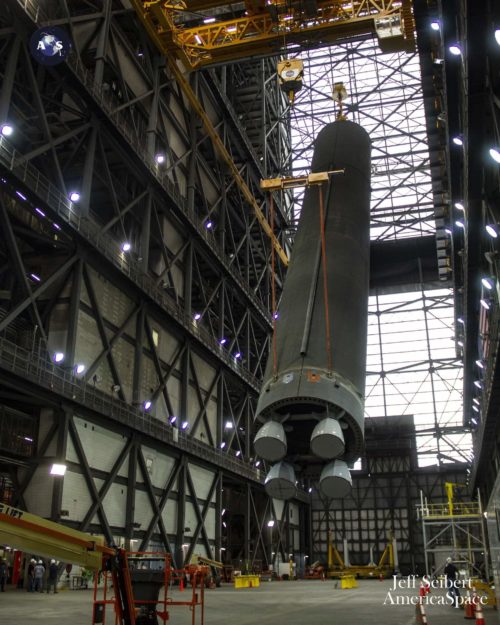
SUBSCRIBE to our YouTube channel!
While work presses forward across the country towards that highly-anticipated first launch in (hopefully) 2021, NASA just ordered a third SLS core stage from Boeing, the actual rocket NASA hopes will launch the first Artemis crew to land the surface of the moon in 2024, and the agency is finalizing details with Boeing for up to 10 of the rockets, which would take care of Artemis missions through the next decade.
The full contract is expected to be finalized within the next year, and also calls for up to eight Exploration Upper Stages (EUS).
And while there is large bipartisan support in Congress for Artemis, time will tell whether NASA will get the extra funding or support for a 2024 lunar landing, as opposed to 2028. Several politicians question motives behind accelerating a moon landing from 2028 to 2024, as well as where the extra money will come from. NASA’s Administrator, Jim Bridenstine, visited Capitol Hill earlier this month to meet with legislators in an effort to secure an additional $1.6 billion, something the subcommittee of the House Appropriations Committee is not willing to give them without knowing the full program cost estimate. Bridenstine has previously estimated $20-30 billion.
NASA is working with the White House and the National Space Council to find a total price for Artemis and, according to Bridenstine, will release its findings in February 2020 as part of next year’s budget cycle.
Quelle: AS



